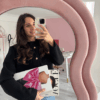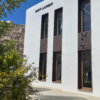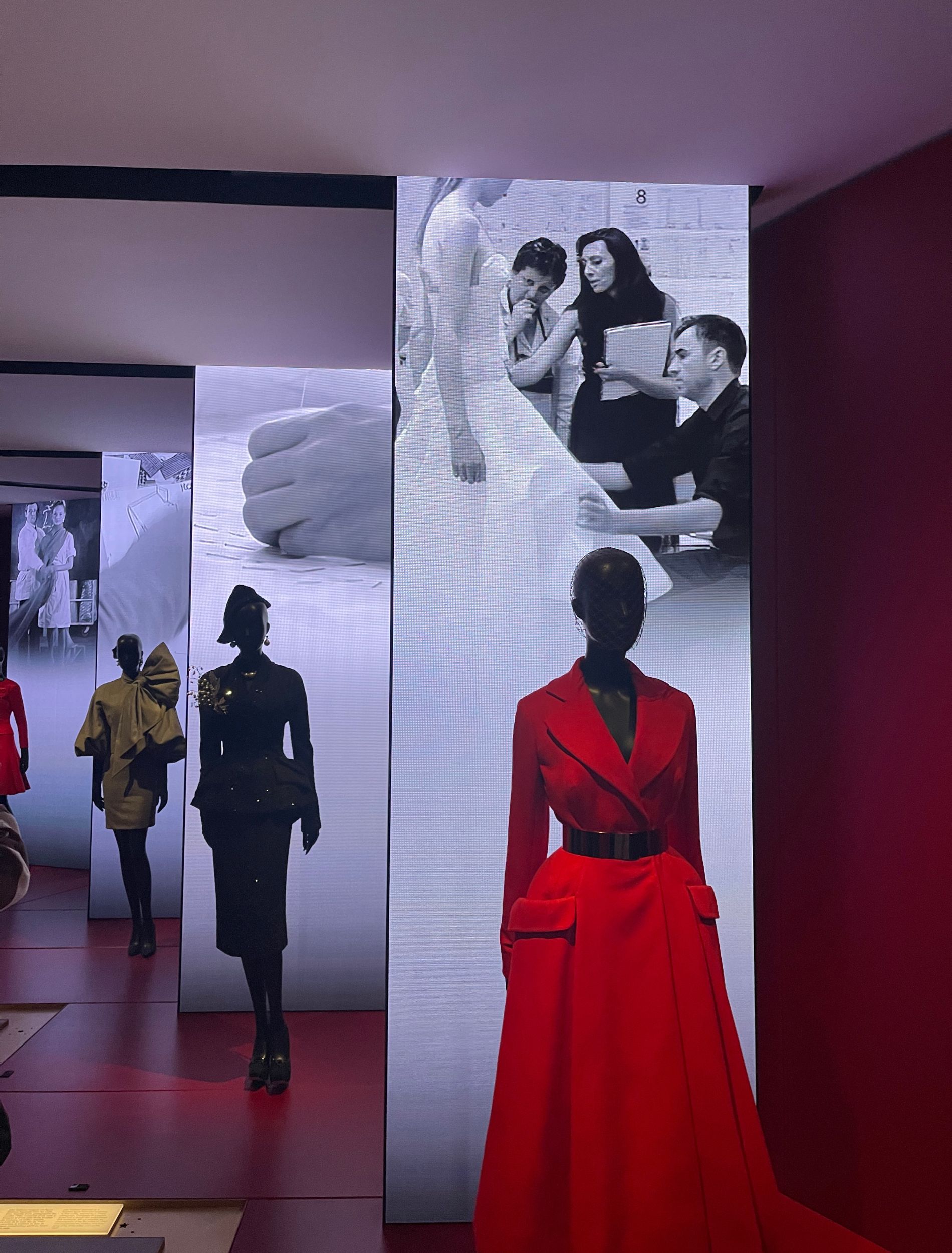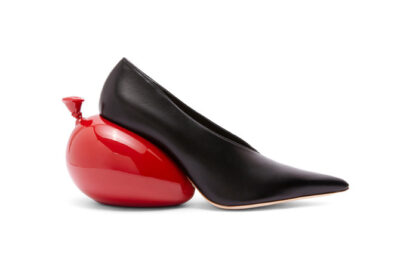Vivienne Westwood was, by far, an unconventional, provocative, and progressive British fashion designer. She was, indeed, a true Dame – as she is often referred to (she was invited by Buckingham Palace in 2006 to accept her Damehood). The different fashion movements that characterized her career can be clearly divided between 4 different periods: the Punk era in the 70s, the Pagan years in the 80s, Anglomania in the 90s, and the era of social and political activism from the 2000s up to the present day.
As the Dame passed away on December 29 of 2022, let’s look more closely at each of these time periods and revisit the highlights of her exciting career.
The early life and trajectory of Vivienne Westwood and how she made it into the fashion world are interesting to look at. Born Vivienne Isabel Swire on April 8, 1941, in the English town of Glossop in Derbyshire, she grew up in a humble family non-related to fashion at all, as her father was a cobbler and her mother worked at a local cotton mill. When she turned 17, the family moved to Harrow in the country of Middlesex where Vivienne worked at a local factory and then as a primary school teacher until 1962 when she met her first husband, Derek Westwood. They got divorced in 1965.
So yes, Vivienne didn’t attend a fashion school, nor she became famous at a young age. She is a self-taught designer who was making dresses and jewelry on the side while teaching. And she decided to take a different career path when she was in her 30s. Her journey is very inspiring. Let’s see how it all began.
The History of Vivienne Westwood
1971-1980: the Punk era
In 1965, Westwood met Malcolm McLaren – the leader of “The Sex Pistols” band, and the couple started pursuing a career in fashion together. In 1971, they opened their boutique 430 Kings Road in London, which quickly became the fashion center of the punk movement, filled with Westwood’s designs that dressed The Sex Pistols band. The store actually changed its name 5 times between 1971 and 1980 to coincide with the collections’ releases: Let it Rock, Too Fast to Live Too Young to Die, Sex and Seditionaries (the latter was renamed in 1977, just as Sex Pistols’s “God Save The Queen” went to number one on the NME chart.) Finally, it was renamed “The Worlds End” in 1980, a title the store still holds today.
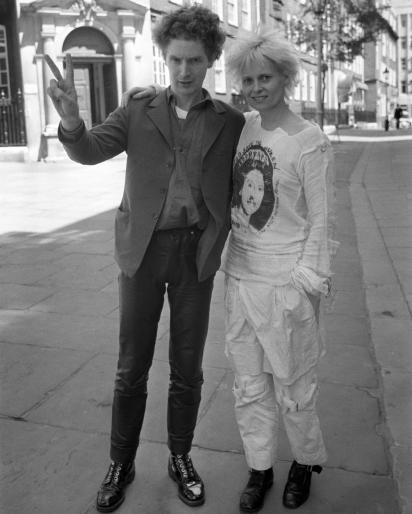
Credits: The Times

Credits: Rolling Stone
In 1981, the couple created their very first collaborative Fall-Winter 1981-1982 ‘Pirate’ show. The collection was inspired by the pieces they were selling at The Worlds End Boutique. And it was acclaimed for its liberation from the constricting silhouettes of the ’70s.
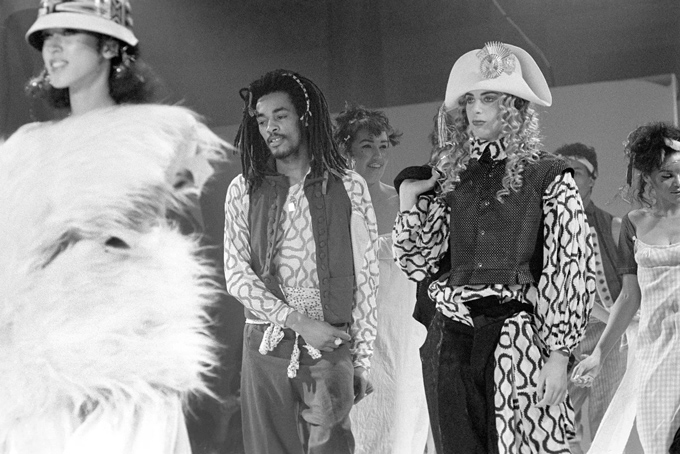
Credits: Vogue
Since then, the designer’s notoriety in the fashion industry began to grow. For example, she received an invitation to show her Spring-Summer 1984 ‘Hypnos’ collection in Tokyo at Hanae Mori’s ‘Best of Five’ global fashion awards.
The 80s also saw the introduction of one of her most famous pieces – the Mini-Crini and the Rocking horse shoes that were shown during the Spring-Summer 1985 catwalk.
1988-1993: The Pagan Years
As the punk culture became mainstream, Westwood’s designs shifted to what some people call “Tatler” girls, wearing clothes that parodied the upper class. Vivienne was, indeed, not afraid of the parody. And so in April 1989, she herself appeared on the cover of the magazine “Tatler” dressed as then-Prime Minister Margaret Thatcher. A quite bold movement at the time.
The designer referred to this period as the “Britain Must Go Pagan” era (the name of one of her fashion shows). And so her collections combined elements from ancient Greece with classic British tailoring. One of her most important and influential collections is considered to be the Autumn-Winter 1987 ‘Harris Tweed’ one, and Westwood explained the idea like this:
“My whole idea for this collection was stolen from a little girl I saw on the tube one day. She couldn’t have been more than 14. She had a little plaited bun, a Harris Tweed jacket, and a bag with a pair of ballet shoes in it. She looked so cool and composed standing there.”

In 1992, Queen Elizabeth awarded her with the O.B.E. (Most Excellent Order of the British Empire). Vivienne Westwood showed up at the event wearing no knickers, considered another bold statement of her life.
In 1990 and 1991, Vivienne received an award for Fashion Designer of the Year from the British Fashion Council.
In 1992, Vivienne introduced wedding gowns into her collections for the very first time. Does Carrie Bradshaw’s wedding dress in Sex and The City: the movie released in 2008 ring a bell?
In 1993, Westwood married for a second time to her assistant Andreas Kronthaler, 25 years her junior, who became her partner in life and work.
1993-1999: Anglomania
From 1993 to 1999, Westwood embraced a new aesthetic of both English and French influences by combining elegant British tailoring with the French love of exaggerated proportions.
For her “Anglomania” Fall-Winter 1993/94 collection, Vivienne designed the infamous McAndreas tartan that she named after Andreas Kronthaler. It was woven by Lochcarron of Scotland and has been received by the Scottish Register of Tartans for permanent preservation in the National Records of Scotland.
The Anglomania show that the couple worked on together is, perhaps, one of the most iconic shows of that time. Naomi Campbell fell during the show as she was wearing very high heels – a picture that makes the show truly unforgettable.
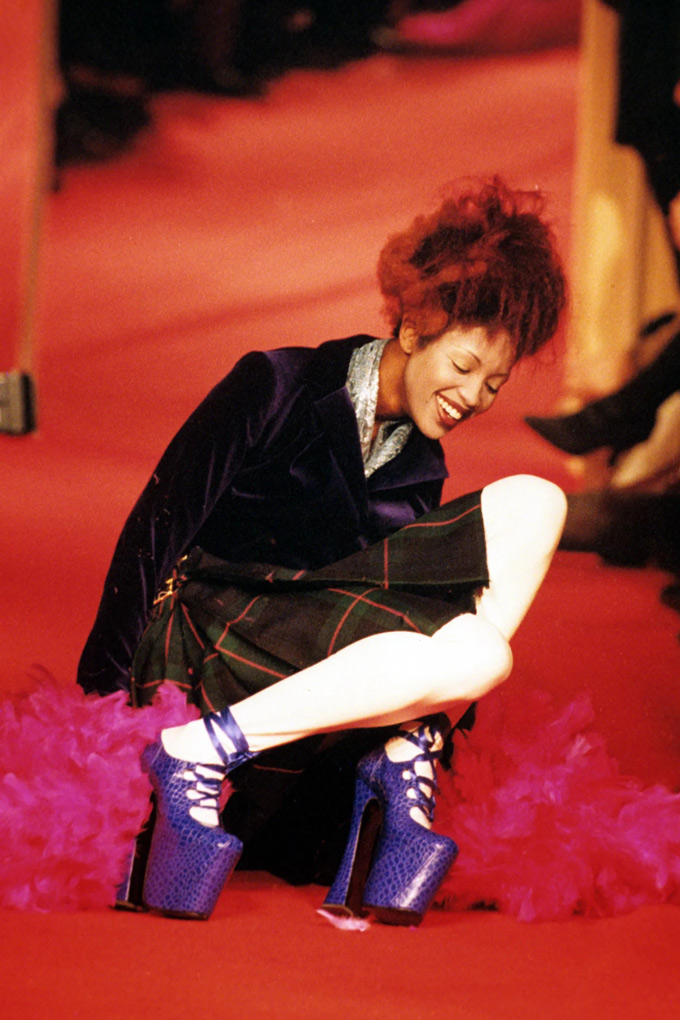
Credits: British Vogue
Notable launches of the 90s era include Vivienne Westwood’s debut fragrance ‘Boudoir’ in 1998, the Vivienne Westwood MAN label in 1996 in Milan, as well as the eponymous Red Label in 1999.
The brand’s stores began expanding internationally when Vivienne Westwood licensed boutique opened in Tokyo, Japan – a first outside of the UK -, as well as in New York in 1999, among others.
2000- present
The period from the 2000s was characterized not only by the designer’s growing influence in the fashion industry but also by her social and political activism and her battle against climate change. “Climate change, not fashion, is now my priority,” she told The Guardian in 2014 – a message that started being vehicled throughout her different collections. Everything she released had underlying social and political messaging. From garments bearing slogans (a wink to her punk days), to runway protests about Brexit, global warming and free speech, criticizing politicians, and so on.
In fact, the Spring 2006 show “AR” – which stands for “active resistance to propaganda,” is one of the collections that the British designer considers among the most political. Perhaps you’ve seen the picture of Vivienne wearing a t-shirt with the infamous slogan “I am not a terrorist”.
Other notable fashion shows that carried a solid environmental message were the Spring-Summer 2013 “Climate Revolution” (which is also a foundation she opened in 2012 to save the environment through work with charities and NGOs), as well as the Autumn-Winter 2013/14 “Save the Arctic” show that later turned into a campaign in 2015.

Credits: Wall Street Journal
However, the designer’s activism didn’t only happen on the runway.
In fact, Vivienne Westwood staged an epic ‘Fash Mob’ on the streets of London ahead of her SS16 Red Label show. Featuring models carrying placards that read ‘Climate Revolution’, ‘Austerity Is A Crime’, and ‘Politicians Are Criminals’.
The career of Vivienne Westwood also includes many sustainability-oriented collaborations. Among which we can point out the one with Burberry in 2018 to support the UK-based non-profit Cool Earth; the Vivienne Westwood X Eastpak ‘SAVE OUR OCEANS’ collection of bags and accessories launched in July 2020; and finally – the house’s partnership with Vivienne environmental not-for-profit Canopy for 2020 World Earth Day in their campaign to protect forests through fabric choices.
Eventually, Vivienne’s sustainability battle became so strong she decided to go fully digital with her fashion shows. Her last physical show was the Autumn-Winter 2019 at London Fashion Week.
Besides the battle against climate change, Vivienne’s 2010s are also known as the era of androgyny. Her Fall-Winter 2015 “Unisex” catwalk was arguably one of the first to showcase androgynous looks to the mainstream, showing Vivienne’s efforts of bringing progressive and inclusive fashion.
What’s next?
The year 2016 marked a new and exciting chapter for the house, as Vivienne and her long-term husband Andreas Kronthaler began producing separate bi-annual collections. Andreas debuted his first official collection during the 2016 Paris Fashion Week there, under the name “Andreas Kronthaler For Vivienne Westwood”, replacing “Vivienne Westwood Gold Label”.
As Vivienne passed away on December 29 of 2022, Andreas shared: “I will continue with Vivienne in my heart. We have been working until the end and she has given me plenty of things to get on with. Thank you darling.”
We are curious to see where he will take the iconic label.
Dreaming of working at Vivienne Westwood or another fashion brand? Register for our free masterclass here to learn 3 unconventional strategies to get a job in fashion quickly.
